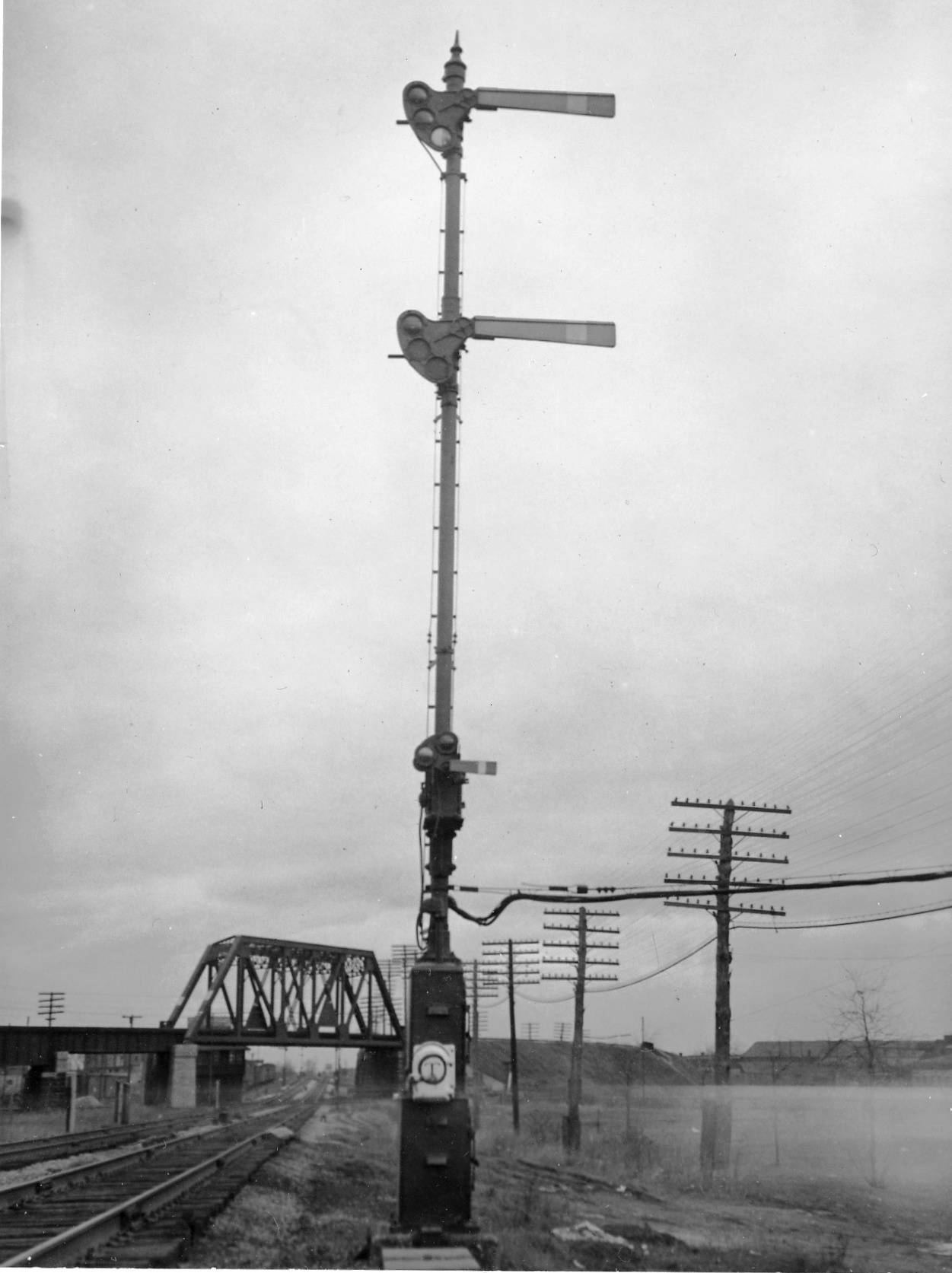Station signs are a uniform way of figuring out where you are on the railroad. Sure mileposts work to, but important landmarks like stations and interlockings and block stations aren't always placed at whole mileposts. Station signs aren't only a navigational aid, but in many cases a reminder device as many movement authorities are given between stations and if thew sign isn't obvious one is more likely to blow right by it. Of course every railroad is going to have it's own idea about what makes a good sign, some even have more than one. Here in Part 1 we'll look at the eastern freight railroads, in Part 2 the western freight railroads and then in Parts 3 and 4 the eastern and western passenger railroads respectively.
Kicking things off,, Conrail use what I think is the most visually distinctive station sign in modern times using it's trademark blue and the Futura Bold font. The signals were typically placed on either side of the main relay hut, although interlockings with two huts could support one each and of course special circumstances could lead to other mountings. The standard signal was a reflective white lettering on a blue background.
However an alternate version existed that also contained the milepost. This existed for a time in the late 80's and early 90's, but I'm not sure if ever fully replaced the regular signals.
There was also this deluxe style sign with a white border and a different font that may have been a one off due to a rush order or something. .
Conrail used a slightly different sign for it's DCS block limits which was based on the PRR style of a vertical name surmounted red and yellow lamps..
Conrail's signage is still relevant today because after the split-up, Norfolk Southern decided to keep the style on all of the former Conrail territory (with a few exceptions early on).
Elsewhere, Norfolk Southern adopted the style of the Southern Railway with a green background and white lettering. The signs are smaller than the Conrail variety and use a stick mount with one plate in each direction. Some of these Southern style signs have appeared in Conrail territory, although the practice seems to have ended.
Southern era signs sometimes have a white border around the outside of the sign.
Moving on to CSX, CSX is a party pooper and doesn't really use station signs. At interlockings it just stencils the interlocking name on the sides of the relay cabins.
The policy applies even to new interlockings in Conrail territory.
CSX used to use a Direct Traffic Control system with their own signage. But DTC was largely replaced on CSX by DCS using mileposts.
The Guilford Rail System, currently known as Pan Am Railways, is known for painting some of it's rolling stock in a retro Pan Am inspired livery. When it comes to station signs however, they can barely be bothered.
A change in milepost prefixes has further degraded the artistic styling of the already bare bones signs.
I have previously discussed
interlocking names on the former Delaware and Hudson, and likewise, their interlocking signs reflect the period of Guilford ownership, although the association with Canadian Pacific did make things a little better.
The newly re-signaled interlockings have a more standard Canadian font, which I assume is bi-lingual in some manner.
Well that's all the Eastern freight railroads I have photos for. Sorry Florida East Coast and Grand Trunk Western :-P



































